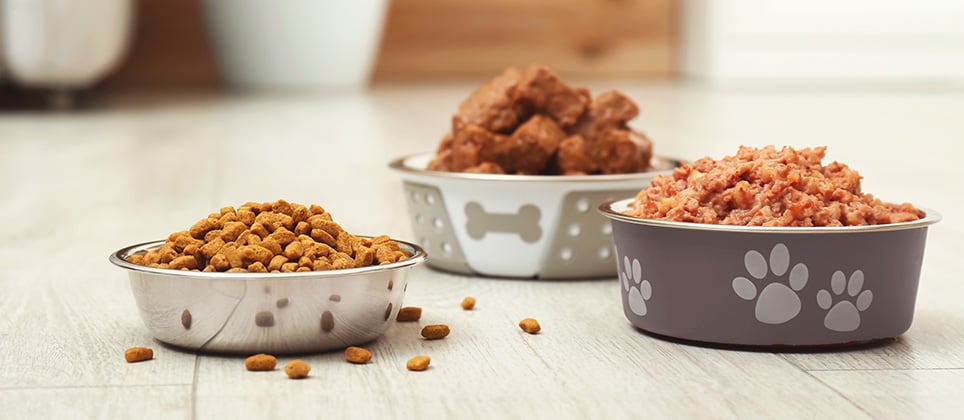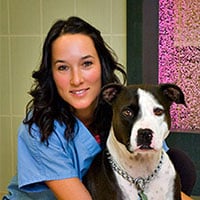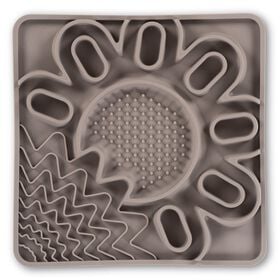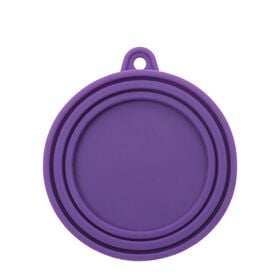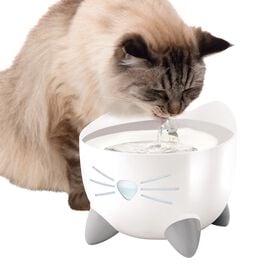Various options are available to feed your cat and dog, ranging from dry kibble to raw meat diets. Choosing the best food for your loyal companion requires considering several factors such as their age, needs, medical history, and environment. To help you make an informed decision, let's take a closer look at the main features of different types of food available for your pet.
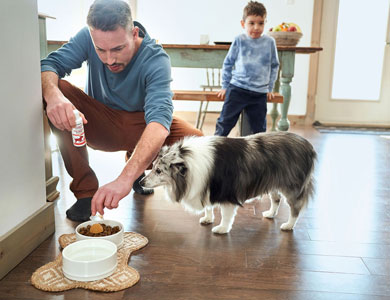
Dry food (kibble)
Kibble is created by mixing ingredients to form a paste, which is then cooked and extruded at high temperatures and pressure. This process eliminates bacteria and makes starch more digestible.
Kibble is available in different sizes and shapes. After that, it is dried and coated with vitamins, minerals, and flavours to make it more delicious. Several methods are used to pack kibble to prevent oxidation and the growth of harmful microorganisms, guaranteeing the product's quality and safety.
Pros:
- Sanitary safety
- Easy to store and preserve
- Guaranteed product quality
- Ingredient reliability and stability for each bag
- Only 8% to 12% water content in the diet (rich in nutrients for the same quantity compared to other diets)
- Mechanical teeth brushing effect for specific kibbles (reducing plaque and tartar buildup)
Cons:
- Destruction of some micronutrients and vitamins due to high-temperature cooking (additives need to be added after the process)
- Higher in carbohydrates (sugar), necessary for kibble shape
Also read: Switching your pet's diet: steps to a successful transition
Wet food (canned)
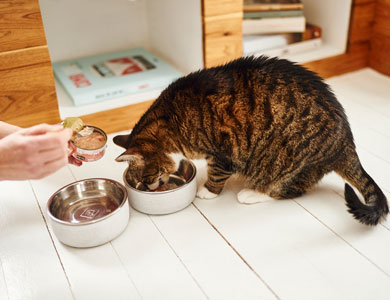
Canned food is also produced after cooking, but it retains more moisture. It usually contains the same ingredients as dry food but has fewer carbohydrates (starch).
Pros:
- Often higher in proteins and larger volume (promoting a healthy weight, especially in cats)
- Very tasty for the animal
- High water content, promoting hydration (e.g., for cats that not to drink enough water)
Cons:
- 70% water content (requires a large volume of food to meet nutritional needs)
- More expensive than kibble
- More food deposits on teeth (predisposing pets to dental problems)
- Rapid use is required (as wet food dries quickly and becomes less appetizing)
Raw food
A raw feeding diet is designed to mimic the natural prey an animal would hunt in the wild, similar to what its ancestors would have eaten. This type of diet is especially suitable for cats, who are strict carnivores and require higher amounts of protein in their diet.
Pros:
- Appetizing food
- More water in the ration, thus greater satiety after meals and better hydration
- Less calorie-dense (allowing a larger quantity of food consumption)
- Smaller stools
- Rich in vitamins (as they are not destroyed by cooking)
- Generally very palatable
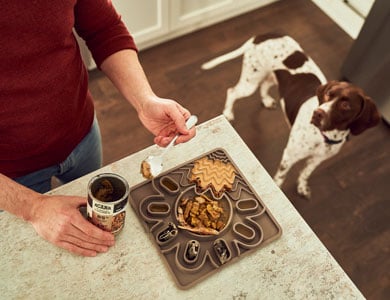
Cons:
- Risk of diet imbalance (lack of specific vitamins and minerals, and often, excessively high levels of other minerals – hence the importance of offering a complete and balanced formula)
- Usually requires the addition of supplements
- Generally more expensive than other types of food
- It may not be suitable if your pet has health problems. Consult your veterinarian before considering a transition
- Risks of bacterial or parasite contamination, which can cause food poisoning in both pets and humans, especially children and those with weak immune systems. Proper management includes thawing, cleaning, monitoring, and discarding uneaten portions. If you want to feed your pet raw food, you must be prepared to do so according to good hygiene rules.
Also read: Raw food : the dos and don'ts
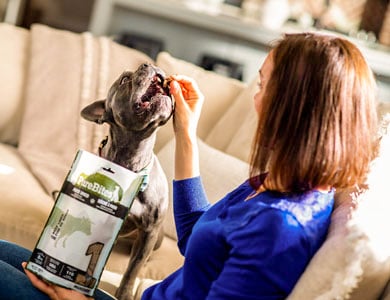
Dehydrated food
This type of food is processed at a lower temperature for longer than regular kibbles. This process helps to preserve the nutritional value of the food better. However, some vitamins and minerals may still be destroyed by the heat. On the other hand, most pathogens are eliminated during this process. Additionally, the preservation process is less conducive to developing bacteria and microorganisms. These types of diets are often grain-free, and as a result, they are gluten-free.
Pros:
- Increased nutritional properties, without chemical additives for preservation
Cons:
- Often more expensive than regular kibble
Freeze-dried food
Freeze-drying is a process in which food is quickly frozen and then dehydrated. The food can regain its properties when water is added. Hikers often use it for its lightweight, long shelf life, and easy handling.
Pros:
- 95% of nutritional values maintained
- Easy preservation
- Often very tasty for the animal
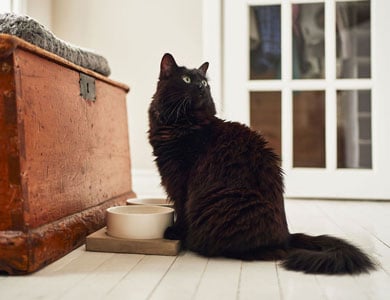
Cons:
- It may contain pathogens since there is no cooking involved
- Shelf life is approximately 6 months when kept cool
- Generally expensive
When purchasing food for your pet, it's essential to check if it has the Association of American Feed Control Officials (AAFCO) seal. This organization verifies if the diets meet the minimum standards for nutritional needs. However, it's important to note that this seal doesn't classify diets based on their quality; it only certifies that they meet the minimum standards.
Remember that a balanced diet is just as crucial for animals as it is for humans, and our furry friends have unique nutritional needs.
If you want to make an informed choice, consult the World Small Animal Veterinary Association (WSAVA) website, which provides a list of questions to ask companies.
